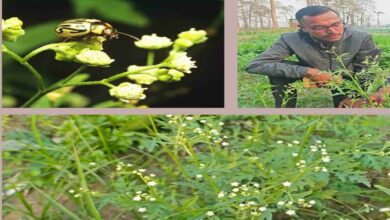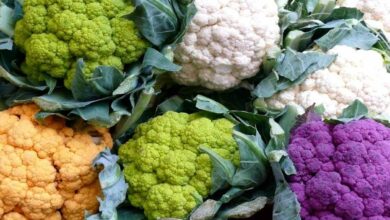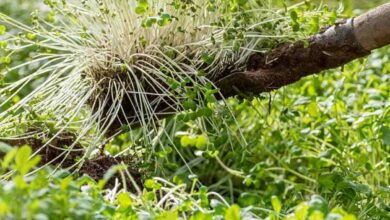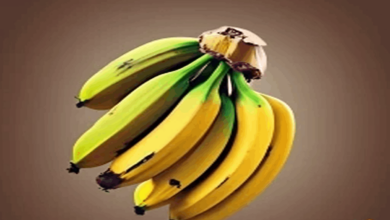Cultivation of Red Rice: Be proficient in all tasks, from growing red rice to harvesting it
Cultivation of Red Rice: Welcome to our blog series on the methods used in red rice growing! From seed to harvest, this all-inclusive book will walk you through every step of growing red rice. Red rice is a tasty and nutrient-dense cultivar distinguished by its intense red color and unusual flavor. Whether you’re a novice gardener or a seasoned farmer, this series will provide insightful analysis and useful advice for growing red rice.
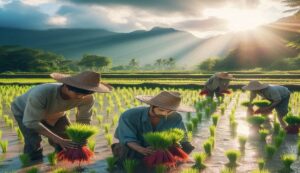
What is farming for red rice?
Growing a distinctive kind of red rice is known as red rice farming. The bran layer of red rice, which is reddish-brown in color and contains anthocyanins, is what gives the rice its name. These pigments give the rice its unique color and, since they are antioxidants, are good for you. Like regular rice, red rice is cultivated in flooded fields, but it needs certain soil qualities and approaches to water management.
Preparing the land, planting the seeds, and maintaining the proper water levels for the duration of the development cycle are all part of the cultivation process. Because red rice is often cultivated organically and uses fewer chemical inputs, its production supports sustainable agriculture. It provides customers with a wholesome and eye-catching substitute for ordinary white rice.
Methods of Growing Red Rice
A variety of methods supported by science are used in red rice farming to maximize the growth of red rice types. Pre- and post-planting methods are used in these procedures to optimize production and reduce possible problems. Farmers often prepare the soil by making sure it is rich in organic matter and well-drained before planting. Crop rotation techniques may also be used to stave off pests and illnesses. Planting density and appropriate spacing are essential for encouraging healthy development.
Moreover, using integrated pest control strategies and balanced fertilizer applications may support crop health maintenance and reduce environmental effect. Weed management and regular watering are examples of post-planting practices. Maintaining the quality of red rice also requires harvesting it at the ideal maturity stage and using suitable storage methods.
Organic Production of Red Rice
Sustainable development and environmental friendliness are given top priority in the production of red rice using organic techniques. Farmers may cultivate red rice without the use of artificial chemicals by using these techniques, guaranteeing that the finished product is free of hazardous residues.
First and foremost, organic farmers depend on organic fertilizers like compost and manure, which enrich the soil with vital nutrients and encourage robust plant development. In order to stop the spread of illnesses and pests, they also use crop rotation methods. Crop rotation lowers the chance of infestation and maintains the soil’s long-term fertility.
In organic red rice production, weeds are controlled by hand weeding or with mechanical instruments. By reducing weed competition, this strategy promotes the growth and maximum production potential of the red rice plants.
In organic red rice farming, water management is essential. To save water, farmers use effective irrigation methods like drip or water-conserving irrigation. By doing this, water is saved and the spread of illnesses that are transmitted via the water is inhibited.
Organic farmers use natural techniques like biological control, which involves introducing beneficial insects or organisms to reduce pests, to manage diseases and pests. They also use trap crops, which deter pests from damaging the red rice plants by luring them away.
The process of harvesting organic red rice is usually carried out by hand, guaranteeing that the grains harvested are ripe. The grains are treated without the use of chemical additions or preservatives after harvest, preserving their original purity.
Seeds and Varieties
The crimson hue of red rice is attributed to pigments known as anthocyanins. These pigments have been connected to a number of health advantages and are present in other red fruits and vegetables as well. Because red rice keeps more of its bran layer, which is rich in fiber and other minerals, it is often healthier than white rice. There are several types of red rice available, and each has special qualities of its own. Bhutanese red rice is a well-liked kind with a little sticky texture and nutty taste after cooking.
Thai red rice is an additional variant with a moderate, nutty flavor. Grown mostly in Southeast Asia, red cargo rice has a deep, earthy taste. Reddish-brown in hue, red rice seeds are tiny. Usually planted in well-drained soil, they need plenty of sunshine. The growth season for these seeds is typically between 100 and 120 days long. Red rice plants have a reputation for being hardy and tolerant of a variety of soil types; however, they do best in rich soil with a pH of 6 to 7.
Methods Used in the Farming of Red Rice
Selecting Seeds: Pick premium red rice seeds from reputable vendors. Choose seeds that are resistant to disease and appropriate for the soil and climate in your area.
Soil Preparation: Completely plough and level the soil to get it ready. Red rice needs well-drained soil to grow; therefore, make sure the drainage is enough to avoid waterlogging.
Planting: Plant the red rice seeds in rows with the proper distance between. Generally, it is advised to leave 20–25 cm between rows and 10–15 cm between plants.
Irrigation: To develop to its full potential, red rice needs a lot of water. Keep the soil consistently wet throughout the growth season, particularly in the beginning. Steer clear of overwatering to avoid fungal infections.
Weed Control: Get rid of weeds on a regular basis to reduce competition for nutrients and available space. Weeds may be successfully controlled by hand weeding or by using the right herbicides.
Fertilization: To provide plants the vital nutrients they need, use organic or chemical fertilizers in a proper ratio. For proper development, red rice typically needs nitrogen, phosphorus, and potassium.
Pest and Disease Management: Keep an eye out for common diseases like bacterial leaf blight and blast, as well as pests like rice stem borers and leaf folders. When required, use the appropriate insecticides and take preventative action.
Harvesting: Red rice should be harvested after it has completely developed and has taken on a crimson hue. Cut the panicles, remove the chaff and separate the grains.
Market Trends for Red Rice
Globally, the market for red rice is expanding significantly due to consumer desire for more nutrient-dense and healthful food alternatives. Around the globe, red rice is grown, with the United States, Thailand, China, Japan, and Sri Lanka being the main growing locations.
Red rice is a staple cuisine and a significant cultural item in Thailand. The country’s northeastern and northern areas are where it is mostly cultivated. China is a major producer of red rice as well, especially in the provinces of Yunnan, Guangdong, and Guangxi in the south. Japan is well-known for its traditional red rice types, most of which are produced in the prefectures of Akita, Yamagata, and Niigata.
In India, states like West Bengal, Kerala, Karnataka, and Himachal Pradesh are major producers of red rice. West Bengal is a leading producer, with important growing regions including Birbhum, Bankura, and Murshidabad. Kerala’s native red rice varieties are well-known, especially in the districts of Wayanad and Malappuram.
The nation’s production of red rice is also aided by the states of Himachal Pradesh and Karnataka. Red rice’s increased appeal may be ascribed to its exceptional nutritional content, distinct taste, and possible health advantages. The red rice market is anticipated to grow both internationally and in India as consumer awareness of healthy food options increases.
Farming that is sustainable
One essential component of sustainable red rice cultivation is the use of organic agricultural methods. This entails staying away from artificial fertilizers and pesticides and depending instead on beneficial organisms and natural alternatives to manage pests and preserve soil fertility.
Another sustainable technique used in red rice cultivation is crop rotation. By alternating red rice with other crops, improving soil health, and preserving a balanced nutritional profile, farmers can lower the danger of pests and illnesses.
For red rice production to be sustainable, water management is essential. Water conservation and waste reduction may be achieved with the use of controlled floods or effective irrigation systems.
Sustainable agricultural techniques also give priority to biodiversity conservation. The ecosystem’s general resilience and health are enhanced by using heritage red rice types, protecting natural habitats, and encouraging beneficial insects.
Nutritional Value
Red rice has a strong nutritional profile, making it a nutrient-dense grain with health advantages. It has a lot of fiber, antioxidants, vitamins, and minerals. Red rice facilitates regular bowel motions, increases fullness, and helps with digestion. It also includes B vitamins, which are essential for the neurological system and energy generation. These include thiamin, niacin, and vitamin B6.
Iron, magnesium, and zinc are other nutrients found in red rice that support the synthesis of red blood cells, the health of bones, and the control of blood pressure. Red rice contains antioxidants called anthocyanins, which protect cells from harm by free radicals and reduce the chance of chronic illness.
Recipes for Cooking Red Rice
There are three delectable red rice cooking recipes offered: Red Rice Pudding with Cinnamon and Raisins, Red Rice Stir-Fry with Tofu and Vegetables, and Red Rice Salad with Roasted Vegetables. Cooked red rice and roasted veggies are combined in this salad, which is then dressed with fresh herbs and lemon juice. Sesame oil should be heated in a big pan or wok, then the tofu and veggies should be cooked after adding minced garlic and red pepper flakes.
After that, the stir-fry is served hot with chopped green onions on top. Cooked red rice, milk, sugar, raisins, cinnamon powder, and vanilla essence are all combined to make red rice pudding. The pudding is a healthy side dish that may be served warm or at room temperature. These dishes provide tasty ways to use red rice in meals while showcasing its adaptability.
Health Advantages
Rich in Antioxidants: Rich in anthocyanins, which help fight oxidative stress and lower the risk of chronic illnesses, red rice is a great source of antioxidants.
Encourages Heart Health: Red rice’s fiber, magnesium, and antioxidants decrease blood pressure, improve blood circulation, and lower cholesterol, all of which are heart-healthy effects.
Diabetes Management: Red rice is a healthier choice for those with diabetes since it has a lower glycemic index than white rice. It enhances insulin sensitivity and aids in blood sugar regulation.
Weight management: Red rice’s high fiber content encourages satiety, which prolongs feelings of fullness. This may help control weight and stop overindulging.
Digestive Health: Red rice’s fiber helps the digestive tract by encouraging bowel motions and averting constipation.
Boosts Immunity: The vital vitamins and minerals included in red rice fortify the immune system, aiding the body in fending off infections and illnesses.
Anti-Inflammatory Properties: Red rice has antioxidants that have the ability to lower inflammation in the body and lessen the symptoms of inflammatory diseases.
Gives Energy: Red rice is a great option for athletes and anyone who require energy that lasts throughout the day since it is a complex carbohydrate that releases energy gradually.
Rich in Nutrients: Red rice provides a decent amount of iron, zinc, manganese, and B vitamins, all of which are essential for excellent health and wellbeing.
Gluten-Free Option: Since red rice is naturally gluten-free, those with celiac disease or gluten sensitivity may eat it.
Management of Pests in Red Rice
Pests that may harm and even destroy a crop of red rice include red rice weevil and red rice stem borer. Cultural practices, crop rotation, clean field preparation, biological control techniques, and pesticides are examples of effective pest management tactics. These vermin may lead to lodging, lower grain quality, and harm to red rice that has been kept. To reduce the application’s negative effects on the environment, it should be prudent and ecologically friendly.
Control of Red Rice Illness
Diseases like blast, which are brought on by Pyricularia oryzae, may harm red rice’s ability to develop and produce. To reduce blasts, farmers should use cultural techniques such as crop rotation, eliminating affected plants, and avoiding wet circumstances. Rhizoctonia solani, the culprit of sheath blight, leaves leaf sheaths with lesions that might lodge in them. Controlling these diseases may be aided by planting disease-resistant types, applying fertilizer in a balanced manner, and maintaining proper field drainage.
Techniques for Harvesting
To guarantee a productive and effective harvest, there are several techniques involved in red rice harvesting. The harvesting procedure starts when the red rice plants are fully grown and the grains are at their ideal level of maturity. The most popular technique is manual harvesting, in which farmers use knives or sickles to cut the rice plants. After harvesting, the plants are tied together and exposed to the sun to dry. After drying, the grains are threshed, either by hand or with the use of machines, to separate them from the plants.
Optimizing Red Rice Yield
Scientists and agriculturalists have been investigating methods to improve red rice crop production and output. These techniques include using effective irrigation techniques, executing appropriate nutrition management plans, and using pest and disease control measures.
Difficulties in Growing
There are various obstacles in red rice cultivation, including as yields that are lower than those of standard types, a scarcity of premium seeds, and particular growth circumstances. Reliable sources of seed variations that are essential for sustained cultivation are difficult to come by for farmers. It might be difficult to meet the needs for sunshine and well-drained soil, particularly in areas with poor soil or restricted irrigation resources.
The management of pests and diseases is also important, as some might have a negative effect on red rice harvests. A good crop depends on efficient disease management plans and pest control techniques.
In summary
In order to cultivate red rice successfully, it is necessary to overcome obstacles such as lower yields, scarce seed supply, particular growth conditions, and efficient pest and disease control. Through the use of suitable techniques and tactics, farmers may encourage the lucrative and sustainable production of red rice, from seed to harvest.


